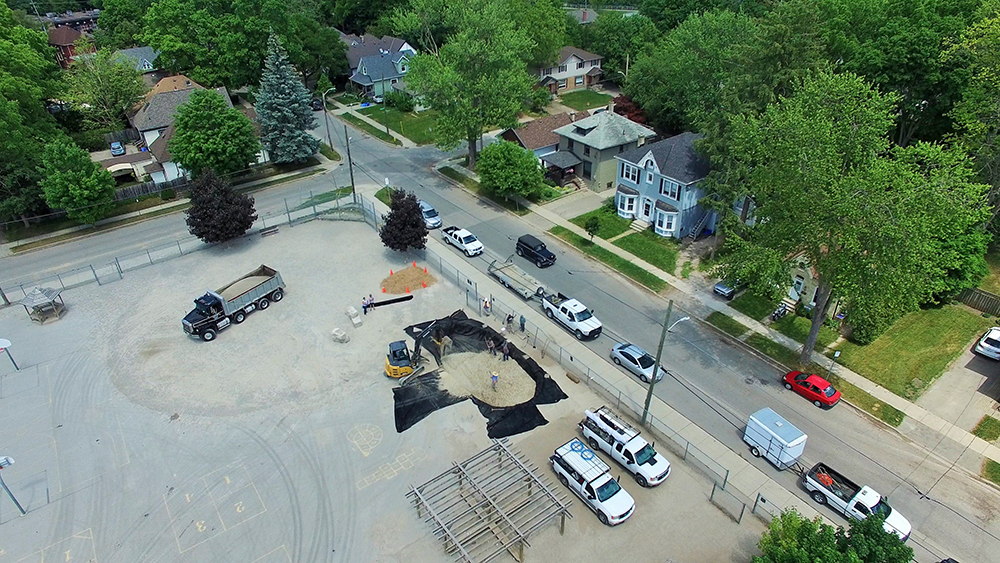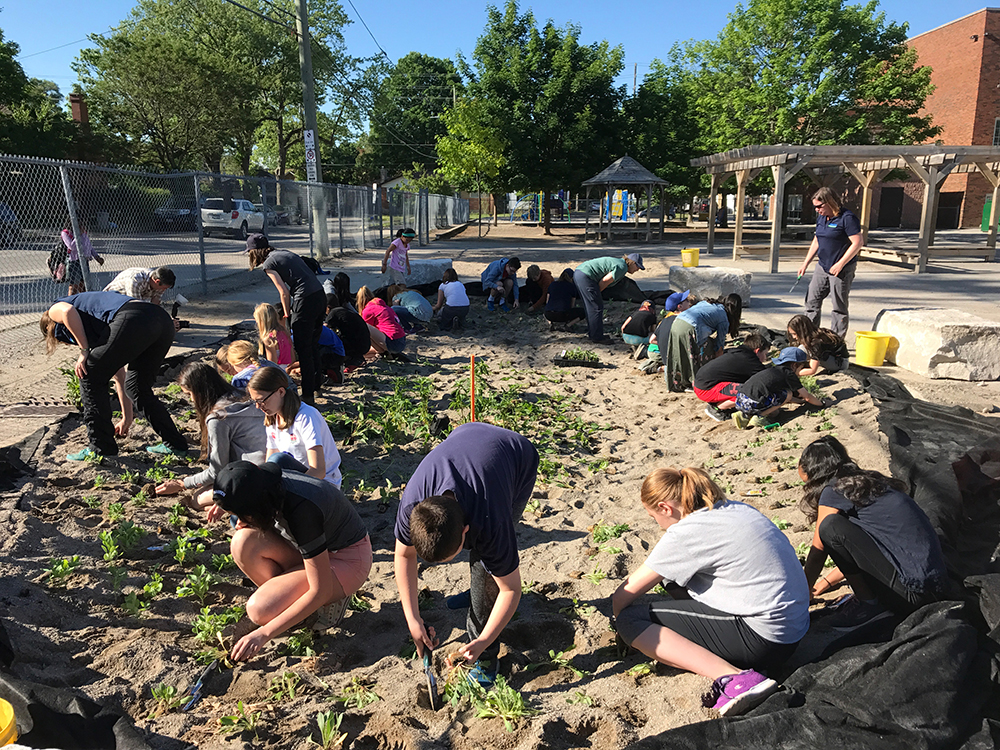LID Project: Jeanne Sauve Public School (London) – Rain Garden
School Yard Projects through the Great Lakes Commission Peer to Peer Mentoring Network
A rain garden was installed at Jeanne Sauvé French Immersion Public School in London, to act as a stormwater management LID demonstration site. The UTRCA received funding from the Great Lakes Commission’s Great Lakes Emerging Champions Mini-Grant program and the Fred A. and Barbara M. Erb Foundation, with design time contributed by MTE Consultants.
Students from Jeanne Sauvé school participated in a stormwater education program and helped to plant the rain garden. The Thames Valley District School Board partnered with the UTRCA, and the Credit Valley Conservation Authority provided expertise.
Just after construction and planting, this LID was subject to a number of localized severe storms with more than 30 mm of rain falling within very short durations. The LID feature functioned very well, receiving and partially infiltrating and conveying the additional runoff into the downstream catch basin. However, over time, the retention of the runoff within the feature close to the pavement subbase affected the integrity of the subbase, and the asphalt lip began to break up without the subbase support. Additionally, it allowed sediment into the feature from the catchment area and caused erosion within the feature.


A consultant was contracted to assist with a design to secure the subbase and stop the erosion. As result, a concrete curb was installed around the edge of the garden, flush with the asphalt pavement, to stop the undercutting. In addition, grasses will be planted to both limit sediment into the feature and contain the woodchips in the garden.
Once the curb is installed, the plan is to place interpretive signage at the site. The UTRCA will follow up with an evaluation of the LID performance by monitoring water depth, flows, and quality during and after storm events.

